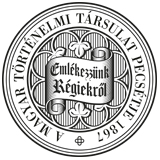Századok – 2018
2018 / 2. szám - FIUMÉTÓL KONSTANTINÁPOLYIG - Hornyák Árpád: A magyar külpolitikai gondolkodás szerb képe a két világháború között
A MAGYAR KÜLPOLITIKAI GONDOLKODÁS SZERB KÉPE A KÉT VILÁGHÁBORÚ KÖZÖTT 400 nehezedett Budapestre és Belgrádra. Ez, mint láttuk, 1940–1941 fordulóján egy rendkívül pozitív szerb képet eredményezett, amelyet azonban 1941 áprilisában a délszláv állam halálos ítéletét kimondó német verdikt, s a magyar szerepvállalás annak végrehajtásában egy pillanat alatt darabokra tépett. THE CHANGING IMAGE OF THE SERBS IN HUNGARIAN FOREIGN POLITICAL THINKING IN THE INTERWAR PERIOD by Árpád Hornyák SUMMARY To put it very simply, the perspective about Serbs in the Hungarian political public was determined by the set of experiences collected during the course of several centuries of cohabitation, and continuously influenced by a constantly changing political atmosphere. Alongside the social, political, cultural and scientific journals of the period, it is parliamentary protocols that offer the best means of tracing the changes in views that were extensive in scale in the two decades under examination. The perspective of Serbs as wild, uncouth Balcanic barbarians turns up as regularly as the idea of the former as a valiant people with features that connect them to the Hungarians – and the idea of the two neighbouring nations predestined by fate to mutually support each other. The relative weight of each view in fact depended on the actual state of bilateral relations, as well as on international pressure put on Budapest and Belgrade.
